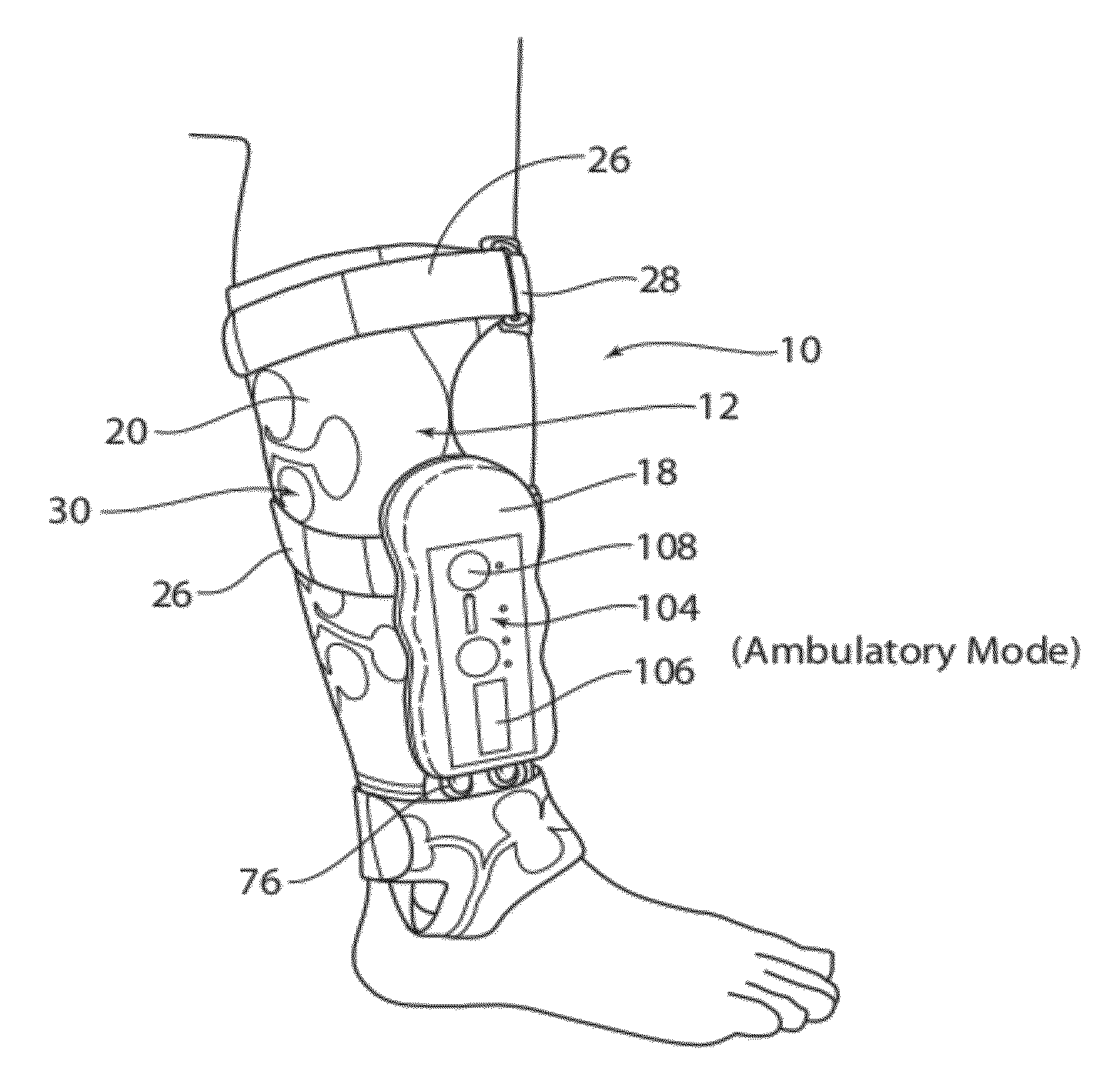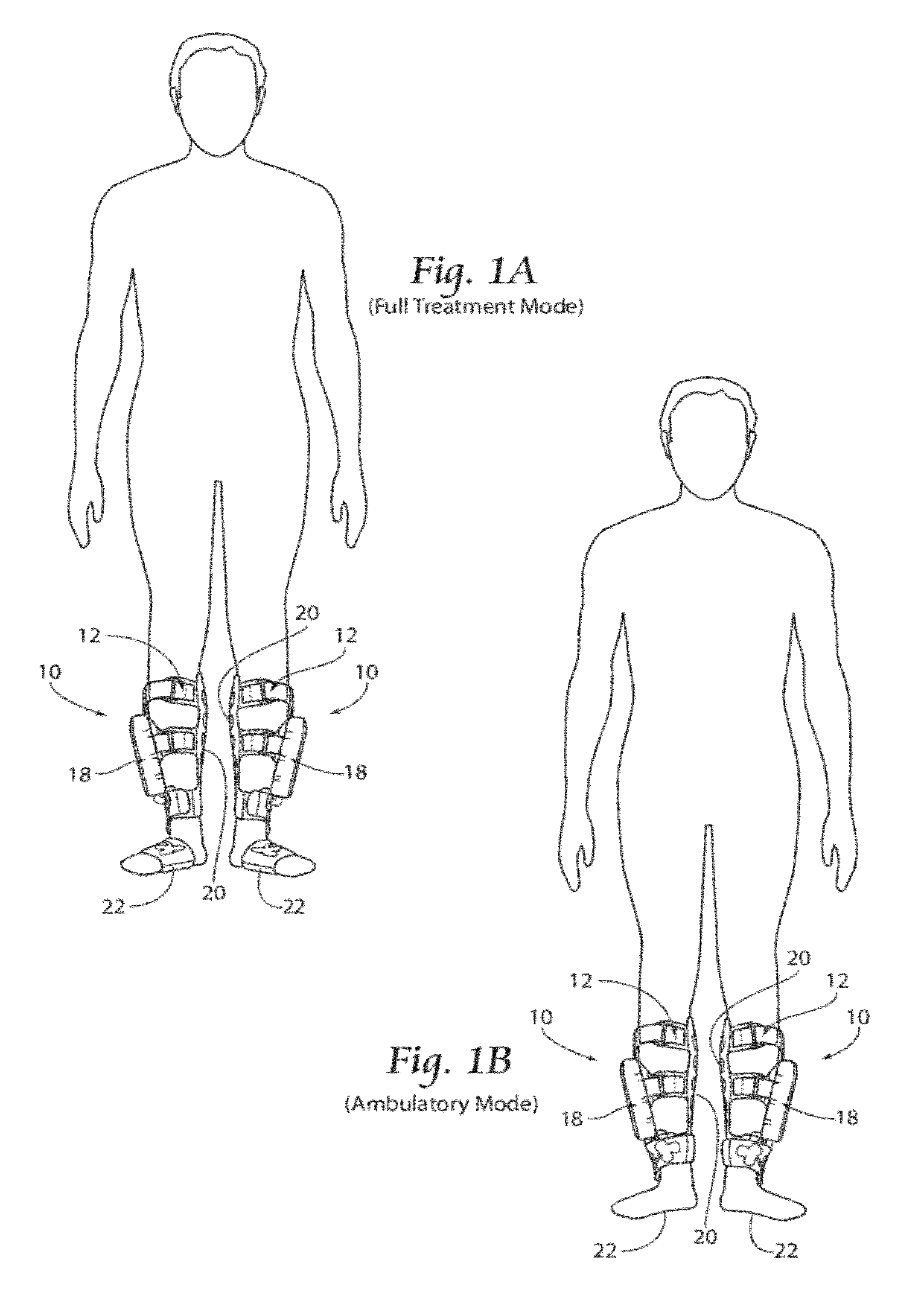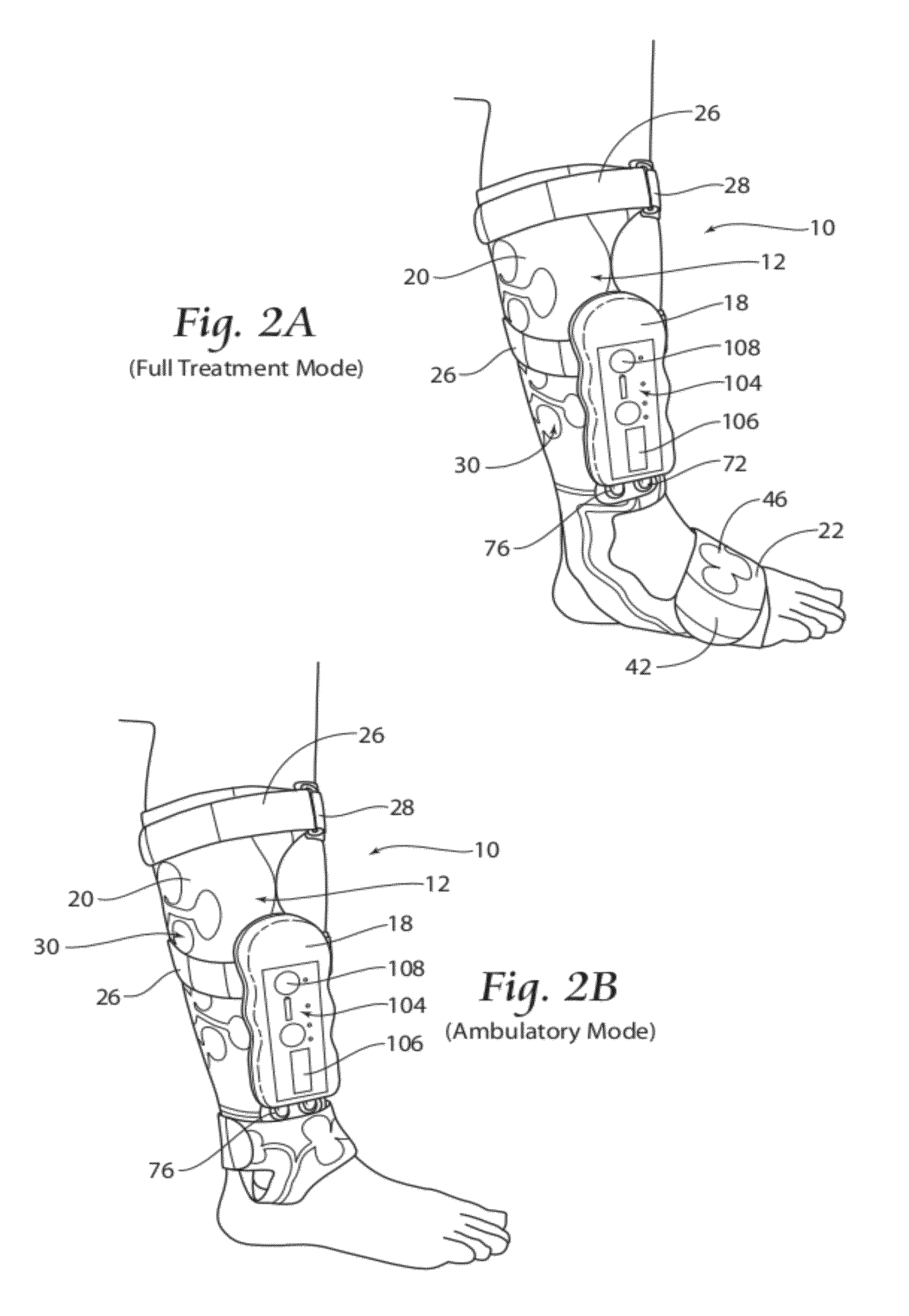Apparatus, systems, and methods for augmenting the flow of fluid within body vessels
a technology of body vessels and fluid flow, applied in the field of therapeutic apparatuses, systems and methods for augmenting the flow of fluid within body vessels, can solve the problems of prolonged wound healing time, poor blood flow, tissue swelling, etc., and achieve the effect of effective and efficient augmenting the flow of fluid
- Summary
- Abstract
- Description
- Claims
- Application Information
AI Technical Summary
Benefits of technology
Problems solved by technology
Method used
Image
Examples
example
[0148]A study was performed to demonstrate the performance of a system 10 as described herein to increase femoral venous peak flow velocity (PFV) in healthy individuals. The study demonstrated a statistically significant increase in peak flow velocity (PFV) during the compression phase of treatment over the baseline measure of PFV. There were no adverse events observed during the study.
[0149]The system 10 evaluated comprised a pneumatic fluid distribution garment 12 like that shown in FIG. 2A, worn on the right calf and foot. The system 10 also includes a pneumatic fluid source 14 like that shown in FIGS. 9 and 10 and a controller 16 located wholly within a common control module 18 (as shown in FIG. 2B) carried wholly by the pneumatic fluid distribution garment 12. Thirty-three (33) individuals (55% women and 45% male) were treated. The average age was 35 years and ranged from 21 years to 63 years. Each individual was treated once on the right leg. For each individual, the procedure...
PUM
 Login to View More
Login to View More Abstract
Description
Claims
Application Information
 Login to View More
Login to View More - R&D
- Intellectual Property
- Life Sciences
- Materials
- Tech Scout
- Unparalleled Data Quality
- Higher Quality Content
- 60% Fewer Hallucinations
Browse by: Latest US Patents, China's latest patents, Technical Efficacy Thesaurus, Application Domain, Technology Topic, Popular Technical Reports.
© 2025 PatSnap. All rights reserved.Legal|Privacy policy|Modern Slavery Act Transparency Statement|Sitemap|About US| Contact US: help@patsnap.com



